Your Trusted Custom Neoprene Steering Wheel Cover Products Manufacturer
We make it easy for you to build your brand by providing a one-stop solution to your OEM/ODM custom production.
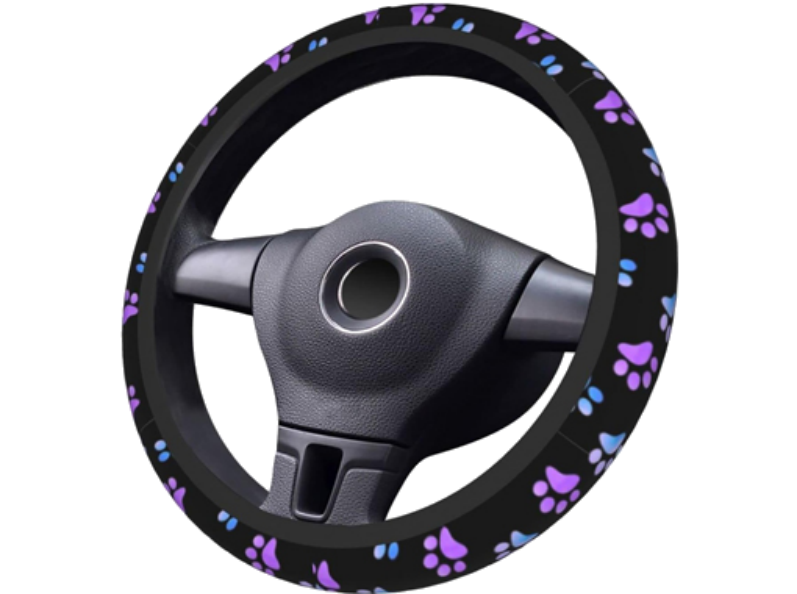
We ensure that every custom neoprene steering wheel cover with high quality will stand out.
Neoprene steering wheel cover customization in various types,colors,pattern ,logo,and others design is what Oneier Company does best.
We offer OEM neoprene steering wheel cover products in a broad range of types, artwork, packaging and other accessories.
Also, we have a strong fabric supply chain to provide the widest range of fabric customized services for your neoprene steering wheel cover.
Our product has received 100% repurchase from our partners,Strict quality control reflected in product details.

Detail One
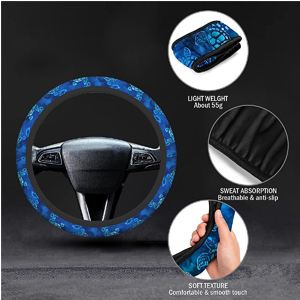
Detail Two
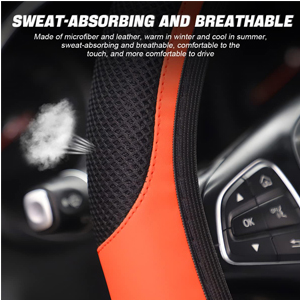
Detail Three
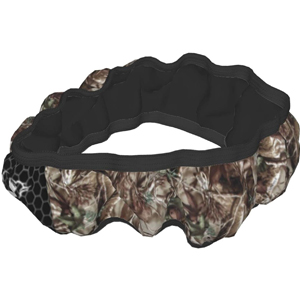
Detail Four
You just choose any types you prefer for your custom neoprene steering wheel cover, and we will take care of the rest.
As a custom neoprene products manufacturer, Oneier has a team of 20+years experienced engineers, designers, sales consultants, and production team who have been engaged in the research and development of different neoprene products. We also have the ability and equipment to conduct advanced testing, production, and packaging. After all, our goal is to make your ideas into a reality.
The benefits And Value We can Bring To You
Custom
Sample making 1-3 day
Delivery
Fast delivery in 1-10 days helps you to take more share of the market
Quality
No complaints, no minor hassles for your customers, which will make your sales worry-free
Cost
Fully automatic equipment manufacturing process for each customer to save production costs and make it more competitive
Support
Put forward your ideas, we design to production completion, for you to save more intermediate costs
Certification
Qualified by BSCI ,Disney ,ISO9001,SGS
You can totally trust us with all certifications shown below
Certification Guarantee

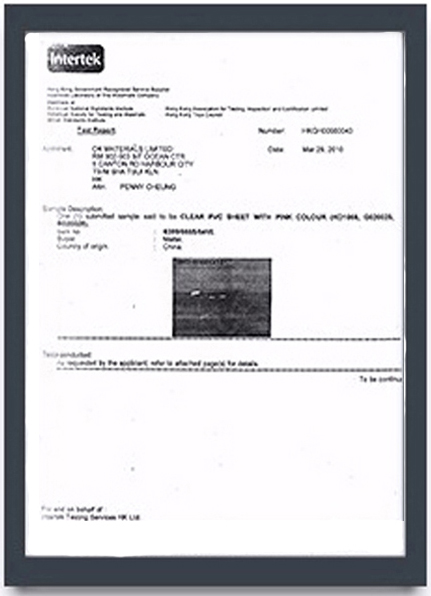
International standardized certification and recognition, so that our workflow, product quality, and management level maintain a high degree of worldwide consistency, ensuring the safe use of each customer.
After obtaining the certificate, enterprises are able to improve product quality by implementing standards, improving and perfecting management, so that each pipe household is satisfied.
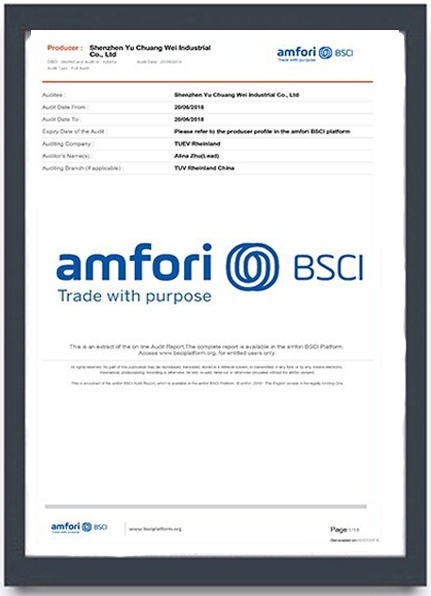
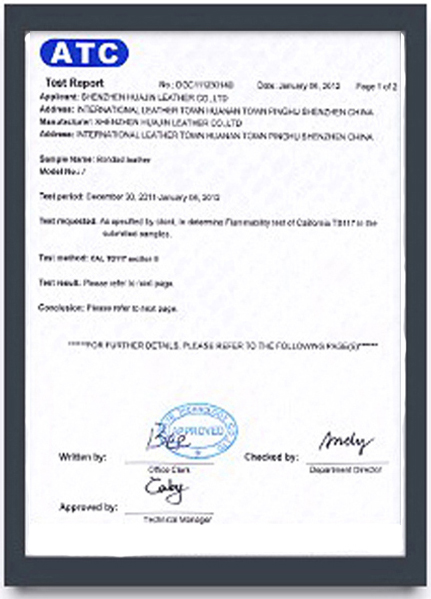
Official certification by third parties, so that products and services are secure and standardized, and every item delivered to the customer is guaranteed.
Hey, don't hesitate to try & feel the FREE SAMPLES before making up your decision
Cooperating Brand Partners Trusted
Your product is produced in reliable factory like our already cooperating international brand partners below:

Effective Production Process of Your Neoprene Products OEM
We believe quality is always the key to success, which includes a responsible approach to manufacturing, and controlling whole process.

1-Business Contact

2-Sample Creation

3-Material Preparing

4-Material Cutting

5-Bulk Production

6-Quality Inspection

7-Product Packaging

8-Cargo Warehousing
What did our happy clients say?
Andrew Jackson
22nd Oct,2021 America
Due to policy reasons, my team and I have analyzed and developed the sales of neoprene koozie. The sales volume increased by 200% last month. It was beyond my expectation. The store staff told me that our this neoprene sleeves always attract the attention of customers. many old customers introduce their friends to come and purchase because of the good quality of our products.It’s true. Awesome, this works better than any other way of advertising. Thank you for providing us with the neoprene can cooler.


Carl Parein
13th Dec,2019 France
Because of the needs of the company’s project development, I selected many suppliers of neoprene koozie for comparative analysis. I was very lucky to find you on Google. I was surprised by the professionalism of your team. From the sharing of product expertise, the introduction of production technology, and the whole service of order production and delivery, the whole project has been well connected. Our products are sold well in the local market. Thank you very much, We will try to maintain cooperation with you all the time
Daniel Garcia
25th May,2010 Australia
I have chosen neoprene koozie as a new project for the company. In the early stages, I analyzed many Chinese suppliers, but only you mentioned,welcome me to visit your factory at any time. I will not hesitate to schedule and purchase a flight to your company’s factory to learn about your company’s products, production processes, and other information. Your reception service is very meticulous,That’s great. Your factory’s professionalism and service have given me confidence in managing my neoprene can coolers project well. thanks

More Things about Neoprene Wheel Covers
What Are The Benefits of Neoprene Wheel Cover Products?
Neoprene Wheel Covers offer several notable advantages due to the inherent properties of neoprene. Here’s a detailed overview:
- Resistance to Various Elements: Neoprene is highly resistant to exposure to ozone, sunlight, oxidation, weather, oils, and solvents. This makes it ideal for applications where exposure to these elements is frequent or inevitable. Certain neoprene compounds can even be fire-resistant.
- Durability and Tear Resistance: Similar to rubber, neoprene is known for its durability and tear resistance. This is crucial for wheel covers as they often endure significant wear and tear in their lifespan.
- Noise Reduction: In cases where neoprene is used for caster wheels, it is particularly valued for its ability to reduce noise. Neoprene wheels operate more smoothly and quietly compared to those made from materials like plastic or cast iron, which is advantageous in environments where noise reduction is important.
- Chemical Resistance: Neoprene is highly resistant to grease, oil, harsh chemicals, and high temperatures, making it suitable for challenging industrial environments or in applications where exposure to these substances is common.
- Versatility and Adhesion to Metals and Fabrics: Neoprene’s versatility is highlighted by its wide temperature range tolerance, from -50 degrees to 275 degrees Fahrenheit. Additionally, it easily adheres to metals and fabrics, enhancing its usability in various applications including automotive gaskets, seals, and weather stripping.
- Wide Application Range: Originally developed as an oil and air resistant substitute for natural rubber, neoprene finds applications in various domains such as appliances, automotive, mass transit applications, and more, due to its robust and adaptable nature.
These properties collectively contribute to the effectiveness of neoprene wheel covers in various settings, making them a reliable choice for numerous applications.
Custom Neoprene Wheel Cover Types
Neoprene wheel covers, known for their versatility and durability, come in various types, each with its unique characteristics:
- Neoprene Steering Wheel Covers:
- Material Properties: Made from neoprene, a synthetic rubber, these covers are versatile, durable, and resistant to water, oils, and UV rays. Their flexibility ensures a snug fit on various steering wheel sizes, and their cushioned texture provides a comfortable grip.
- Temperature Regulation: Neoprene acts as an insulator, protecting hands from extreme temperatures and ensuring a comfortable driving experience.
- Durability and Protection: These covers are long-lasting and protect the steering wheel from wear, tear, and damage due to sunlight and other elements.
- Grip and Control: They offer a non-slip surface, enhancing the driver’s control and safety.
- Aesthetic and Customization: Available in various colors and patterns, they allow personalization and can rejuvenate the look of an older steering wheel.
- Easy Maintenance: Neoprene is easy to clean, quick to dry, and resistant to mold and odors.
- Neoprene Gasket Material:
- Types: Includes closed-cell, open-cell, diaphragm, and homogenous (solid) neoprene, each with different strengths, density, hardness, and other properties.
- Characteristics:
- Closed-cell Neoprene: Features individually encapsulated cells, making it resistant to air, dirt, moisture, and effective in absorbing and insulating shock, sound, and vibration.
- Diaphragm Neoprene: Reinforced with polyester, it can withstand high pressures and exposure to oil- and petroleum-based compounds.
- Homogenous (Solid) Neoprene: Offers resistance to oil and ozone, commonly used in automotive gaskets and flange applications.
- General Neoprene Types:
- Solid Neoprene Rubber: These denser forms are excellent in abrasive conditions. They have high tensile strength and are less compressible, making them ideal for abrasive applications. Solid neoprene sheets are heat-resistant and sometimes blended with other compounds for enhanced properties.
- Neoprene Foam (Sponge): This softer, foam-like neoprene has a structure filled with air pockets, making it highly compressible and ideal for seals and gaskets that require tight seals. It’s also effective in absorbing vibrations.
- Closed-cell Neoprene Foam: Impermeable to water and excellent in insulating temperature, this type of neoprene is standard in wetsuits due to its waterproof and temperature-insulating properties.
Each type of neoprene wheel cover is designed to meet specific needs, whether it’s for steering wheel protection, gasket sealing, or specialized applications like wetsuits, highlighting neoprene’s adaptability and effectiveness in various roles.
Considerations When Buying Neoprene Wheel Covers
When considering the purchase of neoprene wheel covers, there are several key factors to keep in mind to ensure you make a choice that best suits your needs:
- Material and Quality: Neoprene is known for its durability, resistance to water, UV rays, chemicals, and abrasions. However, it’s important to ensure the material’s quality and to consider any potential off-gassing odors from synthetic materials.
- Size and Fit: Accurately measure the diameter and grip circumference of your steering wheel or seats to ensure a snug fit. Improperly sized covers can either be too loose, affecting functionality, or too tight, making installation difficult.
- Comfort and Temperature Sensitivity: Neoprene can be uncomfortable in extreme temperatures, as it tends to retain heat in summer and can become stiff in cold weather. This factor is particularly important if you live in areas with very hot or very cold climates.
- Climate Compatibility: Choose materials that suit your local climate. For steering wheel covers, in hot climates, materials that do not absorb heat are preferable. In colder regions, materials that provide insulation and warmth are more suitable.
- Grip and Safety: For steering wheel covers, look for anti-slip properties, especially in hot or humid conditions where hands might get sweaty. Safety is paramount, so ensure the cover does not impede steering.
- Aesthetics and Personalization: Neoprene covers come in various colors and patterns, allowing you to choose a design that matches your car’s interior and personal style.
- Ease of Installation and Maintenance: Opt for covers that are easy to install and clean. Neoprene is generally easy to maintain, often requiring just a mild soap and water for cleaning.
- Cost Considerations: While neoprene covers tend to be more expensive than other materials, their durability and protective qualities can offer long-term value.
- Review and Feedback: Before finalizing your purchase, consider reading reviews and ratings from other buyers to gauge the product’s performance and durability.
- Cost and Budget:
- Consider your customers’ budget when selecting custom wheel covers. Look for manufacturers that offer competitive prices and bulk discounts, so you can provide your customers with quality facial care at an affordable price. At Oneier,we offer high-quality wheel covers including Various styles at an affordable price.
11. Bulk Purchasing Options:
- Minimum Order Quantity: Understand the minimum number of units (MOQ 50-100)required to avail bulk pricing.
- Customization in Bulk: Ensure that customization options are still available when purchasing in bulk.
12. Quality Assurance:
- Make sure to purchase neoprene wheel covers from a reputable manufacturer like Oneier that has stringent quality control measures in place. This ensures that the products you are selling meet safety and efficacy standards and will provide your customers with the best results possible.
In summary, when selecting neoprene wheel covers, it’s crucial to balance practicality, comfort, and style, while also considering the specific conditions and requirements of your vehicle and driving environment.
What is The Process For Customizing Neoprene Wheel Covers
The process of customizing neoprene wheel covers typically involves several steps, leveraging the expertise of engineers, designers, and production teams. Here is an overview of the key stages based on information from various manufacturers:
- Initial Business Contact and Customer Input: The process begins with initial business contact where the customer’s needs and specifications for the neoprene wheel cover are discussed. This phase includes understanding the customer’s requirements regarding design, color, pattern, logo, and other specific customizations.
- Design and Prototyping (Optional): Based on the input received, the design team works on creating a prototype. This step may include suggestions on modifications for ease of assembly, cleaning, and repairs. Prototyping is optional but can be crucial for ensuring the final product meets the customer’s expectations.
- Material Selection and Preparation: A crucial part of the process is selecting the right neoprene material. This involves choosing the fabric that will meet the specific needs of the product, such as durability, flexibility, and resistance to various elements. The selected materials are then prepared for the next stages of production.
- Material Cutting and Customization: The neoprene material is cut according to the design specifications. This stage may include the integration of various types, artwork, packaging, and other accessories as per the custom design requirements.
- Bulk Production: Once the design and materials are finalized, the product goes into bulk production. This involves the manufacturing of the wheel covers in large quantities, adhering to the predefined specifications.
- Quality Inspection: After production, each neoprene wheel cover undergoes a strict quality inspection process. This step ensures that all products meet the high standards set by the manufacturer and are consistent with the customer’s requirements.
- Packaging and Shipping: The final stage involves packaging the neoprene wheel covers and preparing them for shipping. The goal is to ensure that the covers reach the customer in perfect condition, ready for use.
- Customization Options: Customization can include various types, colors, patterns, logos, and other design elements. The manufacturer, such as Oneier, offers a broad range of customization services, backed by a strong fabric supply chain and an experienced team.
Throughout these stages, manufacturers like Oneier utilize the expertise of experienced engineers, designers, and production teams who are engaged in the research and development of different neoprene products. They also have the capacity for advanced testing, ensuring the final product is of high quality and meets the client’s specifications.
Is Neoprene FDA Approved?
Neoprene, a synthetic rubber, can achieve FDA approval when it is manufactured using ingredients that meet the specific standards and regulations set by the U.S. Food and Drug Administration (FDA). This ensures that the material is safe for applications that involve direct or indirect contact with food.
Compliance with FDA Guidelines: For neoprene to be FDA approved, it must be produced from ingredients that are on the FDA’s list of approved substances. This is crucial as it ensures that the material does not contain any components that could be harmful when in contact with food or beverages.
Color and Appearance: FDA-approved neoprene is generally available in an off-white color. The color is a distinguishing feature that helps in identifying FDA-compliant materials, ensuring that they are easily distinguishable from non-compliant materials.
Intended Use: FDA-approved neoprene is specifically designed for repeated food exposure. This makes it a safe and reliable choice for applications in the food processing industry, where materials are constantly in contact with different food products.
Oil Resistance: One of the key characteristics of FDA-approved neoprene is its excellent resistance to oils. This property is particularly important in food processing and industrial applications where exposure to oils and fats is common. The material’s ability to resist these substances ensures that it maintains its integrity and does not degrade over time, even under constant exposure.
Preference in Food Processing and Industrial Applications: Due to its compliance with FDA standards, as well as its resistance to oils and suitability for repeated food contact, FDA-approved neoprene is a preferred material in the food processing industry. It is also commonly used in various industrial applications where safety and compliance with health standards are paramount.
In summary, neoprene can be FDA approved when produced with specific, FDA-compliant ingredients, ensuring its safety for use in food-related applications. Its excellent oil resistance and suitability for repeated food contact make it a preferred material in both the food processing industry and various industrial contexts.
Most Asked Questions About OEM ODM Custom Wheel Covers Product Line
Are you interested in creating a custom neoprene wheel covers product but don’t know where to start?
Here are 10 FAQs to help guide you through the process:
- What customization options are available for Neoprene Wheel Covers? We offer a range of customization options, including various colors, patterns, logos, and types. You can also request specific sizes or designs to fit different wheel dimensions.
- Can I have a prototype of my custom design before bulk production? Yes, we can create a prototype based on your specifications. This allows you to evaluate the design, fit, and functionality before proceeding to bulk production.
- What is the minimum order quantity for custom Neoprene Wheel Covers? The minimum order quantity varies based on the complexity of the design and customization requirements. We can discuss and determine a suitable number based on your needs.
- How long does it take from ordering to delivery? The lead time depends on the order size and customization details. Typically, it ranges from a few weeks to a couple of months, including production and shipping time.
- What quality control measures are in place for custom Neoprene Wheel Covers? Our quality control process includes material inspection, design accuracy checks, and final product testing to ensure durability and adherence to specifications.
- Can we request specific materials for our Neoprene Wheel Covers? Yes, we offer a variety of neoprene grades and can source specific materials based on your requirements, such as UV resistance, waterproofing, or temperature resistance.
- Can we request specific materials for our Neoprene Wheel Covers? Yes, we offer a variety of neoprene grades and can source specific materials based on your requirements, such as UV resistance, waterproofing, or temperature resistance.
- How do you ensure the color accuracy in the final product? We use color matching systems and provide samples for approval to ensure the final product matches your desired color specifications.
- What are the packaging and shipping options available? We offer various packaging options, including bulk packaging and individual boxing. Shipping methods can be tailored to your needs, whether by air, sea, or land.
- Can you assist with design aspects of the wheel covers? Absolutely. Our team includes experienced designers who can assist in refining your designs or creating new concepts based on your ideas.
- Are there sustainable or eco-friendly options available for Neoprene Wheel Covers? We are committed to sustainability and can provide eco-friendly options, such as recycled neoprene or environmentally responsible manufacturing processes.
These questions and answers aim to cover a broad range of inquiries a buyer might have, from the basics of customization to specifics about quality control, materials, and sustainability.
What Are The Benefits of Neoprene Wheel Cover Products?
Neoprene Wheel Covers offer several notable advantages due to the inherent properties of neoprene. Here’s a detailed overview:
- Resistance to Various Elements: Neoprene is highly resistant to exposure to ozone, sunlight, oxidation, weather, oils, and solvents. This makes it ideal for applications where exposure to these elements is frequent or inevitable. Certain neoprene compounds can even be fire-resistant.
- Durability and Tear Resistance: Similar to rubber, neoprene is known for its durability and tear resistance. This is crucial for wheel covers as they often endure significant wear and tear in their lifespan.
- Noise Reduction: In cases where neoprene is used for caster wheels, it is particularly valued for its ability to reduce noise. Neoprene wheels operate more smoothly and quietly compared to those made from materials like plastic or cast iron, which is advantageous in environments where noise reduction is important.
- Chemical Resistance: Neoprene is highly resistant to grease, oil, harsh chemicals, and high temperatures, making it suitable for challenging industrial environments or in applications where exposure to these substances is common.
- Versatility and Adhesion to Metals and Fabrics: Neoprene’s versatility is highlighted by its wide temperature range tolerance, from -50 degrees to 275 degrees Fahrenheit. Additionally, it easily adheres to metals and fabrics, enhancing its usability in various applications including automotive gaskets, seals, and weather stripping.
- Wide Application Range: Originally developed as an oil and air resistant substitute for natural rubber, neoprene finds applications in various domains such as appliances, automotive, mass transit applications, and more, due to its robust and adaptable nature.
These properties collectively contribute to the effectiveness of neoprene wheel covers in various settings, making them a reliable choice for numerous applications.
Custom Neoprene Wheel Cover Types
Neoprene wheel covers, known for their versatility and durability, come in various types, each with its unique characteristics:
- Neoprene Steering Wheel Covers:
- Material Properties: Made from neoprene, a synthetic rubber, these covers are versatile, durable, and resistant to water, oils, and UV rays. Their flexibility ensures a snug fit on various steering wheel sizes, and their cushioned texture provides a comfortable grip.
- Temperature Regulation: Neoprene acts as an insulator, protecting hands from extreme temperatures and ensuring a comfortable driving experience.
- Durability and Protection: These covers are long-lasting and protect the steering wheel from wear, tear, and damage due to sunlight and other elements.
- Grip and Control: They offer a non-slip surface, enhancing the driver’s control and safety.
- Aesthetic and Customization: Available in various colors and patterns, they allow personalization and can rejuvenate the look of an older steering wheel.
- Easy Maintenance: Neoprene is easy to clean, quick to dry, and resistant to mold and odors.
- Neoprene Gasket Material:
- Types: Includes closed-cell, open-cell, diaphragm, and homogenous (solid) neoprene, each with different strengths, density, hardness, and other properties.
- Characteristics:
- Closed-cell Neoprene: Features individually encapsulated cells, making it resistant to air, dirt, moisture, and effective in absorbing and insulating shock, sound, and vibration.
- Diaphragm Neoprene: Reinforced with polyester, it can withstand high pressures and exposure to oil- and petroleum-based compounds.
- Homogenous (Solid) Neoprene: Offers resistance to oil and ozone, commonly used in automotive gaskets and flange applications.
- General Neoprene Types:
- Solid Neoprene Rubber: These denser forms are excellent in abrasive conditions. They have high tensile strength and are less compressible, making them ideal for abrasive applications. Solid neoprene sheets are heat-resistant and sometimes blended with other compounds for enhanced properties.
- Neoprene Foam (Sponge): This softer, foam-like neoprene has a structure filled with air pockets, making it highly compressible and ideal for seals and gaskets that require tight seals. It’s also effective in absorbing vibrations.
- Closed-cell Neoprene Foam: Impermeable to water and excellent in insulating temperature, this type of neoprene is standard in wetsuits due to its waterproof and temperature-insulating properties.
Each type of neoprene wheel cover is designed to meet specific needs, whether it’s for steering wheel protection, gasket sealing, or specialized applications like wetsuits, highlighting neoprene’s adaptability and effectiveness in various roles.
Considerations When Buying Neoprene Wheel Covers
When considering the purchase of neoprene wheel covers, there are several key factors to keep in mind to ensure you make a choice that best suits your needs:
- Material and Quality: Neoprene is known for its durability, resistance to water, UV rays, chemicals, and abrasions. However, it’s important to ensure the material’s quality and to consider any potential off-gassing odors from synthetic materials.
- Size and Fit: Accurately measure the diameter and grip circumference of your steering wheel or seats to ensure a snug fit. Improperly sized covers can either be too loose, affecting functionality, or too tight, making installation difficult.
- Comfort and Temperature Sensitivity: Neoprene can be uncomfortable in extreme temperatures, as it tends to retain heat in summer and can become stiff in cold weather. This factor is particularly important if you live in areas with very hot or very cold climates.
- Climate Compatibility: Choose materials that suit your local climate. For steering wheel covers, in hot climates, materials that do not absorb heat are preferable. In colder regions, materials that provide insulation and warmth are more suitable.
- Grip and Safety: For steering wheel covers, look for anti-slip properties, especially in hot or humid conditions where hands might get sweaty. Safety is paramount, so ensure the cover does not impede steering.
- Aesthetics and Personalization: Neoprene covers come in various colors and patterns, allowing you to choose a design that matches your car’s interior and personal style.
- Ease of Installation and Maintenance: Opt for covers that are easy to install and clean. Neoprene is generally easy to maintain, often requiring just a mild soap and water for cleaning.
- Cost Considerations: While neoprene covers tend to be more expensive than other materials, their durability and protective qualities can offer long-term value.
- Review and Feedback: Before finalizing your purchase, consider reading reviews and ratings from other buyers to gauge the product’s performance and durability.
- Cost and Budget:
- Consider your customers’ budget when selecting custom wheel covers. Look for manufacturers that offer competitive prices and bulk discounts, so you can provide your customers with quality facial care at an affordable price. At Oneier,we offer high-quality wheel covers including Various styles at an affordable price.
11. Bulk Purchasing Options:
- Minimum Order Quantity: Understand the minimum number of units (MOQ 50-100)required to avail bulk pricing.
- Customization in Bulk: Ensure that customization options are still available when purchasing in bulk.
12. Quality Assurance:
- Make sure to purchase neoprene wheel covers from a reputable manufacturer like Oneier that has stringent quality control measures in place. This ensures that the products you are selling meet safety and efficacy standards and will provide your customers with the best results possible.
In summary, when selecting neoprene wheel covers, it’s crucial to balance practicality, comfort, and style, while also considering the specific conditions and requirements of your vehicle and driving environment.
What is The Process For Customizing Neoprene Wheel Covers
The process of customizing neoprene wheel covers typically involves several steps, leveraging the expertise of engineers, designers, and production teams. Here is an overview of the key stages based on information from various manufacturers:
- Initial Business Contact and Customer Input: The process begins with initial business contact where the customer’s needs and specifications for the neoprene wheel cover are discussed. This phase includes understanding the customer’s requirements regarding design, color, pattern, logo, and other specific customizations.
- Design and Prototyping (Optional): Based on the input received, the design team works on creating a prototype. This step may include suggestions on modifications for ease of assembly, cleaning, and repairs. Prototyping is optional but can be crucial for ensuring the final product meets the customer’s expectations.
- Material Selection and Preparation: A crucial part of the process is selecting the right neoprene material. This involves choosing the fabric that will meet the specific needs of the product, such as durability, flexibility, and resistance to various elements. The selected materials are then prepared for the next stages of production.
- Material Cutting and Customization: The neoprene material is cut according to the design specifications. This stage may include the integration of various types, artwork, packaging, and other accessories as per the custom design requirements.
- Bulk Production: Once the design and materials are finalized, the product goes into bulk production. This involves the manufacturing of the wheel covers in large quantities, adhering to the predefined specifications.
- Quality Inspection: After production, each neoprene wheel cover undergoes a strict quality inspection process. This step ensures that all products meet the high standards set by the manufacturer and are consistent with the customer’s requirements.
- Packaging and Shipping: The final stage involves packaging the neoprene wheel covers and preparing them for shipping. The goal is to ensure that the covers reach the customer in perfect condition, ready for use.
- Customization Options: Customization can include various types, colors, patterns, logos, and other design elements. The manufacturer, such as Oneier, offers a broad range of customization services, backed by a strong fabric supply chain and an experienced team.
Throughout these stages, manufacturers like Oneier utilize the expertise of experienced engineers, designers, and production teams who are engaged in the research and development of different neoprene products. They also have the capacity for advanced testing, ensuring the final product is of high quality and meets the client’s specifications.
Is Neoprene FDA Approved?
Neoprene, a synthetic rubber, can achieve FDA approval when it is manufactured using ingredients that meet the specific standards and regulations set by the U.S. Food and Drug Administration (FDA). This ensures that the material is safe for applications that involve direct or indirect contact with food.
Compliance with FDA Guidelines: For neoprene to be FDA approved, it must be produced from ingredients that are on the FDA’s list of approved substances. This is crucial as it ensures that the material does not contain any components that could be harmful when in contact with food or beverages.
Color and Appearance: FDA-approved neoprene is generally available in an off-white color. The color is a distinguishing feature that helps in identifying FDA-compliant materials, ensuring that they are easily distinguishable from non-compliant materials.
Intended Use: FDA-approved neoprene is specifically designed for repeated food exposure. This makes it a safe and reliable choice for applications in the food processing industry, where materials are constantly in contact with different food products.
Oil Resistance: One of the key characteristics of FDA-approved neoprene is its excellent resistance to oils. This property is particularly important in food processing and industrial applications where exposure to oils and fats is common. The material’s ability to resist these substances ensures that it maintains its integrity and does not degrade over time, even under constant exposure.
Preference in Food Processing and Industrial Applications: Due to its compliance with FDA standards, as well as its resistance to oils and suitability for repeated food contact, FDA-approved neoprene is a preferred material in the food processing industry. It is also commonly used in various industrial applications where safety and compliance with health standards are paramount.
In summary, neoprene can be FDA approved when produced with specific, FDA-compliant ingredients, ensuring its safety for use in food-related applications. Its excellent oil resistance and suitability for repeated food contact make it a preferred material in both the food processing industry and various industrial contexts.
Most Asked Questions About OEM ODM Custom Wheel Covers Product Line
Are you interested in creating a custom neoprene wheel covers product but don’t know where to start?
Here are 10 FAQs to help guide you through the process:
- What customization options are available for Neoprene Wheel Covers? We offer a range of customization options, including various colors, patterns, logos, and types. You can also request specific sizes or designs to fit different wheel dimensions.
- Can I have a prototype of my custom design before bulk production? Yes, we can create a prototype based on your specifications. This allows you to evaluate the design, fit, and functionality before proceeding to bulk production.
- What is the minimum order quantity for custom Neoprene Wheel Covers? The minimum order quantity varies based on the complexity of the design and customization requirements. We can discuss and determine a suitable number based on your needs.
- How long does it take from ordering to delivery? The lead time depends on the order size and customization details. Typically, it ranges from a few weeks to a couple of months, including production and shipping time.
- What quality control measures are in place for custom Neoprene Wheel Covers? Our quality control process includes material inspection, design accuracy checks, and final product testing to ensure durability and adherence to specifications.
- Can we request specific materials for our Neoprene Wheel Covers? Yes, we offer a variety of neoprene grades and can source specific materials based on your requirements, such as UV resistance, waterproofing, or temperature resistance.
- Can we request specific materials for our Neoprene Wheel Covers? Yes, we offer a variety of neoprene grades and can source specific materials based on your requirements, such as UV resistance, waterproofing, or temperature resistance.
- How do you ensure the color accuracy in the final product? We use color matching systems and provide samples for approval to ensure the final product matches your desired color specifications.
- What are the packaging and shipping options available? We offer various packaging options, including bulk packaging and individual boxing. Shipping methods can be tailored to your needs, whether by air, sea, or land.
- Can you assist with design aspects of the wheel covers? Absolutely. Our team includes experienced designers who can assist in refining your designs or creating new concepts based on your ideas.
- Are there sustainable or eco-friendly options available for Neoprene Wheel Covers? We are committed to sustainability and can provide eco-friendly options, such as recycled neoprene or environmentally responsible manufacturing processes.
These questions and answers aim to cover a broad range of inquiries a buyer might have, from the basics of customization to specifics about quality control, materials, and sustainability.
Start Your Custom Neoprene Products Business Today!

Anna
Sales Manager

Grace
Sales Manager

Julie
Sales Manager

Mike
Sales Manager

Nancy
Sales Manager
We are here for all your business needs and questions.
